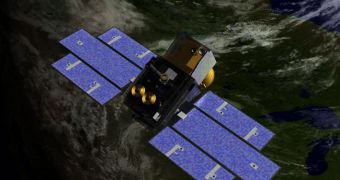Officials at NASA announce that the ICESat satellites, which have been orbiting the Earth for the past seven years, completely burned up while reentering the planet's atmosphere on Monday.
The instrument was until now trained on the polar regions, where it conducted a variety of scientific studies that proved invaluable for bettering our understanding of the environment.
According to an official announcement, the Ice, Cloud, and land Elevation satellite produced only a small amount of debris, which scattered in the Barents Sea.
This body of water is located north of Norway and Russia, and was impacted at 0900 GMT. Officials at the US Orbital Debris Program Office say that this event had been predicted beforehand.
The Office is based in Houston, Texas, as the NASA Johnson Space Center (JSC), Space reports. Experts here decided to lower ICESat's orbit this July, before plunging it into the atmosphere.
“ICESat has been a tremendous scientific success. It has provided detailed information on how the Earth's polar ice masses are changing with climate warming, as needed for government policy decisions,” says Jay Zwally.
The expert is a project scientist for the mission, who is based at the NASA Goddard Space Flight Center (GSFC), in Greenbelt, Maryland.
One of the main things the satellite did was provide experts back on Earth with advanced understanding of ice sheet and sea ice dynamics. This in turn may help devise better programs of mitigating ice loss.
Figuring out how global warming and climate change influence ice spreads around the world is extremely important if the phenomenon is to be reversed, or at least stopped dead in its tracks.
“Thanks to ICESat we now also know that the Antarctic ice sheet is not losing as much ice as some other studies have shown,” Zwally reveals.
“The ICESat team has done a marvelous job to ensure that the spacecraft is removed as a hazard to other spacecraft and as a potential source of future orbital debris,” explains Nicholas Johnson.
He is the JSC Chief Scientist for Orbital Debris. Over the past few years, concerns over the rising threat of space debris have multiplied. Last year, two satellites collided in orbit, producing a shower of deadly pieces of space junk.
A destroyed Chinese satellite also produced vast amounts of debris, after the Asian nation decided to demonstrate to the world that it possessed capabilities of destroying orbital weapons.

 14 DAY TRIAL //
14 DAY TRIAL //